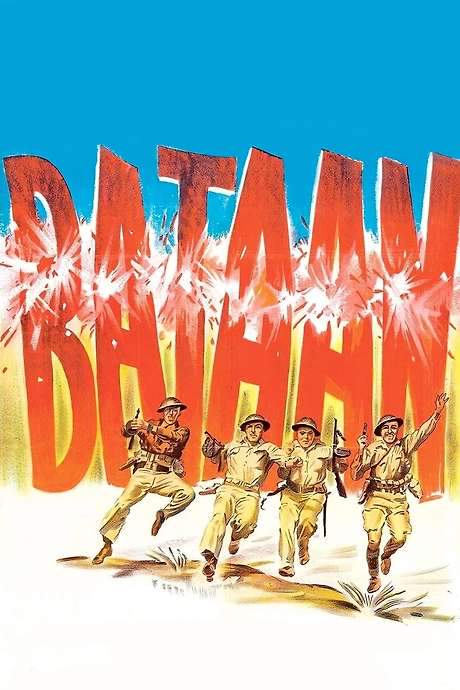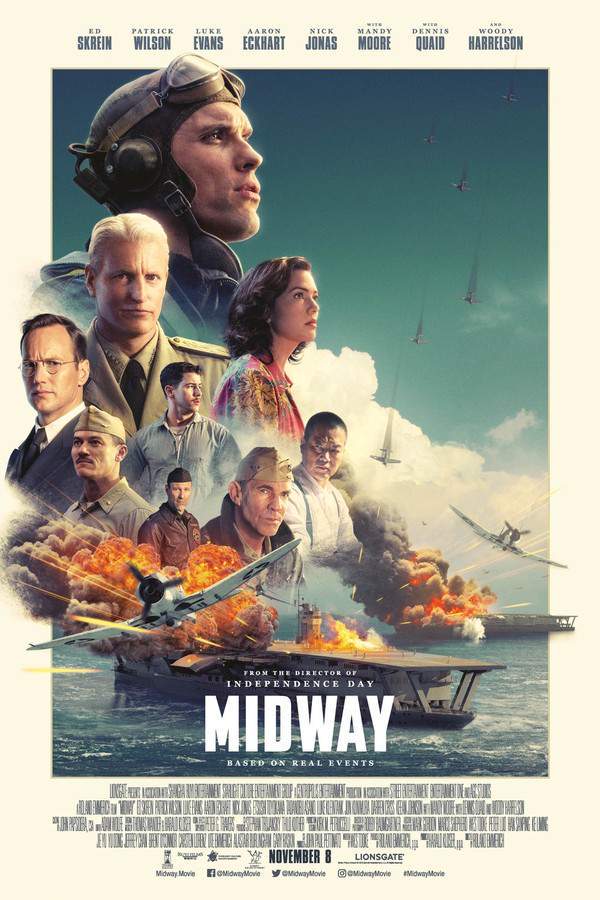
Air Force
Year: 1943
Runtime: 124 mins
Language: English
Director: Howard Hawks
The crew of an Air Force bomber arrives at Pearl Harbor in the aftermath of the Japanese attack and is dispatched to Manila to aid the defense of the Philippines. Amid the early Pacific campaign, they fly dangerous sorties, confront enemy forces, and bond tightly as they fight to turn the tide of World War II.
Warning: spoilers below!
Haven’t seen Air Force yet? This summary contains major spoilers. Bookmark the page, watch the movie, and come back for the full breakdown. If you're ready, scroll on and relive the story!
Air Force (1943) – Full Plot Summary & Ending Explained
Read the complete plot breakdown of Air Force (1943), including all key story events, major twists, and the ending explained in detail. Discover what really happened—and what it all means.
On December 6, 1941, the Mary-Ann, a U.S. Army Air Corps B-17D, is ordered to fly a crucial mission from San Francisco to Hawaii alongside eight other Flying Fortresses. The crew is a tight-knit mix of seasoned veterans and rising officers, each carrying personal stakes into the flight. Master Sergeant Robbie White, the crew chief, is a long-time aviation man whose pride is shadowed by a personal loss—the fact that his son Danny is serving as an officer and fighter pilot. Beside him, the navigator, Lieutenant Monk Hauser Jr., is the son of a World War I hero from the Lafayette Escadrille, and his presence adds a weight of legacy and expectation to the mission as the crew charts a dangerous, untested course. The ship’s leadership also includes the pilot, Michael “Irish” Quincannon Sr., a seasoned flyer whose leadership will be tested in the crucible ahead, and the capable co-pilot, Gig Young, along with the meticulous bombardier, Arthur Kennedy. The gunner, Sergeant Joe Winocki John Garfield, carries simmering resentment from a past near-miss that nearly robbed him of his chance to fly.
The Mary-Ann and its sister aircraft push forward with full equipment and a hard-edged discipline, yet they’re missing ammunition—an ominous gap as they head toward the Pacific theater. The mission takes on a new urgency as they approach Hickam Field and encounter the early, chaotic tremors of a surprise attack at Pearl Harbor. The crew’s nerves tighten as the world suddenly pivots toward war in a way that few could have anticipated. The Mary-Ann reluctantly receives two extra passengers: a young fighter pilot, Lieutenant Thomas “Tex” Rader James Brown, and a small dog named Tripoli who serves as the Marines’ mascot on Wake Island. These additions bring new stakes and a human moment to the tense flight, reminding everyone aboard that this war will touch ordinary lives in unforeseen ways.
When they reach Clark Field in the Philippines, tragedy and resolve collide. White learns that his own son has fallen in aerial combat, a devastating blow that steels the crew with a grim determination. The Mary-Ann presses on, gallantly attacking a Japanese invasion fleet, but the onslaught of enemy fighters is relentless. The aircraft is forced to abort its assault after losing two engines, and the situation becomes even more dire when Quincannon, gravely wounded, orders his men to bail out before he blacks out. In a lone act of sheer resolve, Winocki remains at the controls to shepherd Mary-Ann through a perilous belly landing. The crew’s resilience is tested to the limit as they survive the crash-landing under enemy eyes, a moment that sets the stage for the desperate night that follows.
With the airfield under the threat of imminent capture, the crew works feverishly through the night to repair their battered bomber. They fashion makeshift repairs using parts cannibalized from damaged B-17s, a testament to ingenuity and the stubbornness that defines this crew. The plan is dangerous but necessary, and they brace themselves against the ever-looming danger as Japanese forces close in. A dramatic turn comes when Chester, an assistant radio operator who had volunteered to fly as a gunner in a two-seat observation plane, takes part in a perilous raid against the enemy. The mission goes awry: Chester bails out when the pilot is killed, but he is machine-gunned during his descent in a parachute and is fatally strafed on the ground, adding another personal tragedy to the mounting toll of the battle. Amid the chaos, Winocki and White manage to shoot down a Zero fighter and kill its pilot as the wreckage smolders, a small victory in a larger, overwhelming fight. The crew’s repairs and refueling are completed just as the Japanese launch a fresh onslaught, and they barely escape being overrun as Clark Field falls.
Their journey continues toward Australia, with Tex Rader stepping into the role of reluctant pilot and the wounded Williams stepping up as co-pilot. The Mary-Ann’s crew remains vigilant as they spot a Japanese invasion fleet below, responding with swift radio coordination to relay the fleet’s position and the approaching danger. They circle the enemy and wait for reinforcements, and when the moment comes, Mary-Ann leads a bold strike that devastates the invading fleet. This sequence is presented with such intensity that it echoes the ferocity and strategic impact of the historical Battle of the Coral Sea, a cinematic mirror of real events transpiring in the broader theater of war. The sense of sacrifice and teamwork is palpable as each member of the crew contributes to a mission that transcends personal risk, turning a perilous flight into a pivotal strike against an advancing force.
As the war rages on, the story returns to the broader arc of heroism and sacrifice: a bombing attack on Tokyo is announced to bomber crews, and among them are several familiar faces from Mary-Ann—Tex Rader among them, now serving as a B-17 pilot in his own right. The scene shifts to the men and women back at the airfields as President Roosevelt’s voice comes through in a voice-over, underscoring the unity of purpose that unites a nation and its air crews. The film closes on the collective resolve of the bomber crews as they head toward the rising sun, their paths intertwined with cattle-prodding courage, stubborn grit, and the quiet, stubborn hope that defines those who take to the skies in times of war. Throughout, the film maintains a restrained, matter-of-fact tone that honors the risks and sacrifices without falling into sensationalism, offering a clear, human portrait of courage under extraordinary pressure.
Last Updated: October 09, 2025 at 11:25
Unlock the Full Story of Air Force
Don't stop at just watching — explore Air Force in full detail. From the complete plot summary and scene-by-scene timeline to character breakdowns, thematic analysis, and a deep dive into the ending — every page helps you truly understand what Air Force is all about. Plus, discover what's next after the movie.
Air Force Timeline
Track the full timeline of Air Force with every major event arranged chronologically. Perfect for decoding non-linear storytelling, flashbacks, or parallel narratives with a clear scene-by-scene breakdown.

Similar Movies to Air Force
Discover movies like Air Force that share similar genres, themes, and storytelling elements. Whether you’re drawn to the atmosphere, character arcs, or plot structure, these curated recommendations will help you explore more films you’ll love.
Explore More About Movie Air Force
Air Force (1943) Scene-by-Scene Movie Timeline
Air Force (1943) Movie Characters, Themes & Settings
Air Force (1943) Spoiler-Free Summary & Key Flow
Movies Like Air Force – Similar Titles You’ll Enjoy
Pearl Harbor (2001) Plot Summary & Ending Explained
Thirty Seconds Over Tokyo (1944) Spoiler-Packed Plot Recap
The War at Sea from Hawaii to Malaya (1942) Full Movie Breakdown
December 7th (1943) Spoiler-Packed Plot Recap
Air Force The Movie: Danger Close (2022) Complete Plot Breakdown
Bataan (1943) Complete Plot Breakdown
Midway (2019) Complete Plot Breakdown
Attack Force Z (1981) Spoiler-Packed Plot Recap
Aerial Gunner (1943) Plot Summary & Ending Explained
Task Force (1949) Plot Summary & Ending Explained
Pacific Inferno (1979) Complete Plot Breakdown
Tora! Tora! Tora! (1970) Detailed Story Recap
Midway (1976) Plot Summary & Ending Explained
Fighter Squadron (1948) Spoiler-Packed Plot Recap
Men of the Sky (1942) Detailed Story Recap

















